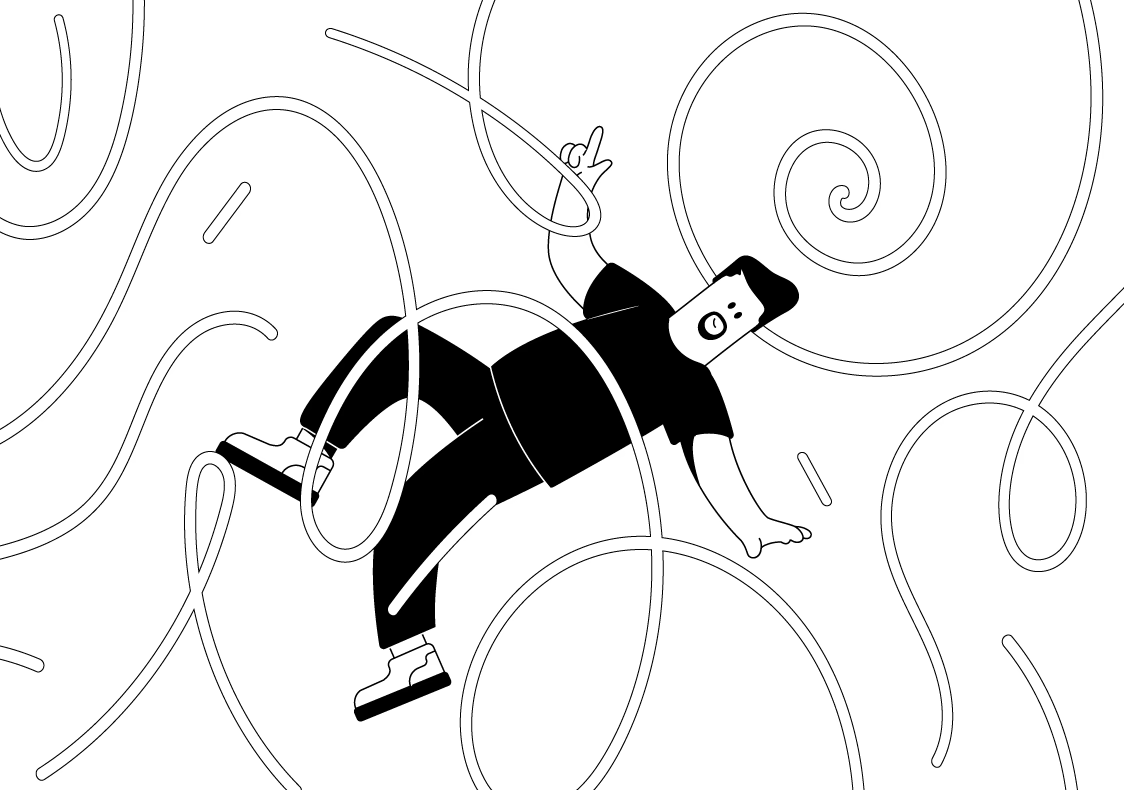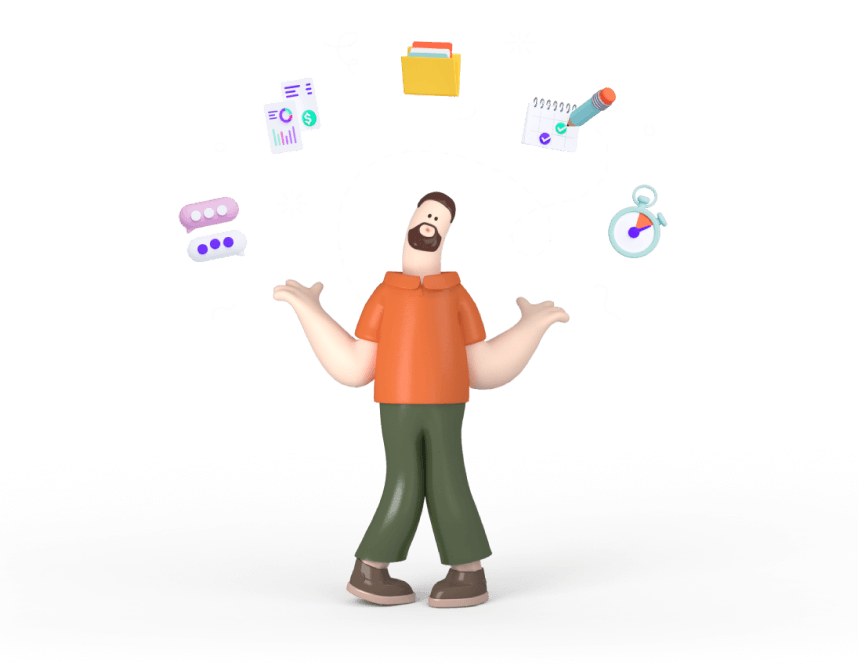Design Thinking Methodology

Design thinking methodology helps teams prioritize user needs when developing new ideas and features. It drives innovation and fosters collaboration as the team strives to create solutions that will meet the real needs of the end user. Design thinking methodology holds all the secrets to effectively creating innovative solutions and bringing ideas to life.

What is a Design Thinking Framework?
The main goal of design thinking is to use it as a framework to help teams create solutions that will fit their customers’ needs and solve issues they might be experiencing. Design thinking allows teams to follow the steps and phases of the design thinking process when bringing ideas to reality. The design thinking framework helps teams come up with solutions by giving them a methodology for approaching the ideation process.
Design Thinking Stages
Design thinking methodology provides the team with steps to follow when coming up with new creative solutions. Following the right order of the 5 stages of design thinking allows the team to make progress to the final results in a steady manner that stirs up creativity and pushes the production process in the right direction.
Design thinking stages:
- Empathize - researching your users’ needs
- Define - defining users’ needs and problems
- Ideate - creating and challenging new ideas
- Prototype - creating a solution
- Test - testing out the solutions
Empathize—Research Your Users' Needs
Empathy is the first step on the design thinking journey. Empathizing with your users' needs allows teams to get an insight into what would be helpful for users to have in a product. Teams should put time and effort into researching the users' needs and develop the product in that direction. The new features, improvements, and enhancements that the team will introduce will benefit many users and improve their user experience. Collecting users’ feedback, feature suggestions, and ideas for improvement shows that the team is putting their best foot forward when creating a product that puts their users first.
Define—State Your Users' Needs and Problems
In the next step, the team needs to state users’ needs and problems before proceeding to the ideation phase to create a solution. The problem needs to be approached from the user’s point of view, and creating a simple problem statement provides the team with the necessary guidelines to move forward.
Defining the problem from the user’s point of view while showing empathy and understanding towards users’ problems helps teams view the product from a different perspective. Design thinking provides the answer to the question of how you can solve the users’ problems or improve their experience rather than how such a solution would benefit the business. Once the problems are stated, categorizing them and prioritizing them is key when choosing the problem that will be worked on in the future to create a solution.

Ideate—Challenge Assumptions and Create Ideas
In the ideation phase of design thinking, teams create ideas and challenge assumptions. This phase aims to create as many solutions as possible that could resolve the issue or problem that the team is trying to resolve. The team needs to collaborate, communicate, and use as many different styles of thinking as possible to come up with unique and creative ideas.
Using different approaches such as brainstorming, reverse-thinking, storyboarding, six thinking hats, and many others, the team can come up with new and fresh ideas that will lead them to the solution of the problem before them.
Prototype—Start to Create Solutions
In this phase, the team that has chosen the idea will develop it into a prototype and then test it further. This phase can confirm that the idea is indeed a success; alternatively, it could prove that the idea is not viable, taking the team a step back in the process.
The goal is to test out the prototype and ensure that it will be useful for the end-user and solve the issues they had, improving the overall user experience. If the prototype doesn’t live up to the expectations, it’s up to the team to identify flaws and constraints and try to redesign or improve the solution. If this cannot be done, the team can still use this knowledge when choosing a different idea and developing it further.
Test—Try Your Solutions Out
Testing out the solutions is the final step in the design thinking process. Testing the prototype ensures that it will provide the clients and end-users with the solution they have been looking for. As the design thinking methodology is a non-linear process, if any problems are found, the team can easily go back a step in this process and improve their solution.
Just like in Kanban, if an issue is found that halts progress, the team takes a step back as they try to improve the end result. Optimizing the final solution before releasing it to all the users can be a process of going back and forth, but that also ensures finding the optimal and desirable solution.
Getting Started with Design Thinking
Making the most of design thinking starts with learning more about the design thinking methodology and including it in the team’s day-to-day practice. Depending on the type of product the team is working on further developing, your users’ needs and the methodology that’s already in use, project managers can start to introduce the team with the design thinking methodology and start implementing it to improve the production process.
Design Thinking in Project Management
Design thinking fits in perfectly with many project management methodologies and is particularly effective in the product development process.
Here’s how design thinking positively impacts project management:
- Expanding creative boundaries
- Viewing the product from customers’ point of view
- Shifting focus to users to create results
- Developing new ideas
- Working on solutions the clients’ need
- Complementing the methodology or approach that’s in use
- Creating irreplaceable service or product
Design thinking in project management brings many benefits to the team, including improved problem-solving. As the team is focused on devising multiple solutions and creative ideas to bring the final result that will be most beneficial for the users, they are encouraged to think out of the box and brainstorm ideas using various creative thinking strategies. This helps project managers to devise the project and its direction further, developing and realizing ideas, allowing design thinking to align with the existing iterative process that the team uses.
Design thinking engages various teams across the organization and boosts stakeholder engagement as they all strive to bring better solutions to the end users and enhance their problem solving process. The main focus of design thinking is improving customer satisfaction. Using design thinking when planning projects allows teams to create products that are tailored to customers’ needs and tending to customers' needs leads to developing a better product overall.
Design Thinking Methodology Example
ActiveCollab is a project management software that focuses on its user needs when creating new features, and therefore uses design thinking methodology when creating new features. Users can leave a feature request on the ActiveCollab website or contact support to explain their feature requests. These feature requests are used when the team is working on creating new features and coming up with ideas for solutions of the existing problems in the app that might negatively affect the overall user experience.
Design Thinking and Agile Methodology
Design thinking is a user-centric approach that focuses on the users’ human needs when coming up with new ideas to create a user centered design. Together with an Agile methodology, design thinking can be a great way to put the focus on delivering the users with the solutions that they need. When an Agile methodology is combined with design thinking, the users are regularly delivered with the new features or product enhancements in a timely manner.
While Agile tries to find an adequate solution to the problem, design thinking brings creative problem solving strategies to the table. Design thinking allows the team to thoroughly think about the problems the users may be experiencing to find multiple possible solutions, some of which will be further worked on and implemented. Contrary to its name, design thinking doesn’t focus solely on the design; its essence is showing empathy to the end-users and trying to enhance and improve the overall user experience and find product pain points.
Design Thinking in Project Management Phases
Design thinking can help to initiate a new project, providing a basis for developing new features or product enhancements. In the project's planning phase, project managers plan the project’s course in detail, for which they can use the conclusions and ideas from the design thinking process. As the project goes through other phases of development - execution, monitoring, controlling, and finally closing - the project managers can then plan alongside the phases of design thinking to test out the solutions before new features or improvements are released to the users.
Incorporating Design Thinking - Challenges
While incorporating design thinking can bring about many of the above-mentioned benefits, it also comes with challenges that project managers may face.
Project managers might find it challenging to build a diverse and collaborative team that will put their best foot forward to create and work on new ideas.
Creating a safe and supportive environment for experimentation while focusing on user needs and feedback requires project managers to plan each step of the project carefully.
The design thinking method also requires the team to go to the previous step if the ideas they initially planned on working on don’t bring success. This can delay the entire production process and requires careful planning on the part of the project managers in order not to break the deadlines that were initially set.
Adjusting to a non-linear process such as design thinking requires implementing changes and staying flexible during the entire time of the project.
As project managers try to incorporate design thinking in the production process, they should stay aware that working on ineffective ideas might lead to spending overall project resources in vain, a path that is certain to lead to a loss of resources.
In addition, working on a project that is not completed in time and not seeing expected results can demotivate the team and cause the team to lose their morale.
Importance of Design Thinking
Design thinking fosters creativity and innovation while focusing on users' needs. It allows teams to shift their focus from creating solutions that they would like to create to creating those that the users will find beneficial. Building the product’s identity and reputation is much easier when accommodating to the needs of its users, which is why design thinking is an important methodology to use. It provides the team with clear steps and phases that they should go through when coming up with new features or changing their product in any way. It also unifies the team, allowing them to explore their creativity, exchange and examine ideas, and explore different ways of creative thinking.
Design Thinking Software
Tools that can help with design thinking are the tools that will facilitate brainstorming, communication and collaboration. Visual types of tools that can be used from the team to exchange ideas better are always a great way to share ideas.
User research is an important aspect of the design thinking process. When collecting feedback from the users, various tools can also be useful to get a grasp on what the users actually need from the product.
Continue reading
Project Management Methodologies Introduction
Get familiar with the most popular methodologies modern project managers use! Learn the basics and choose the best method to manage your teams and projects.
